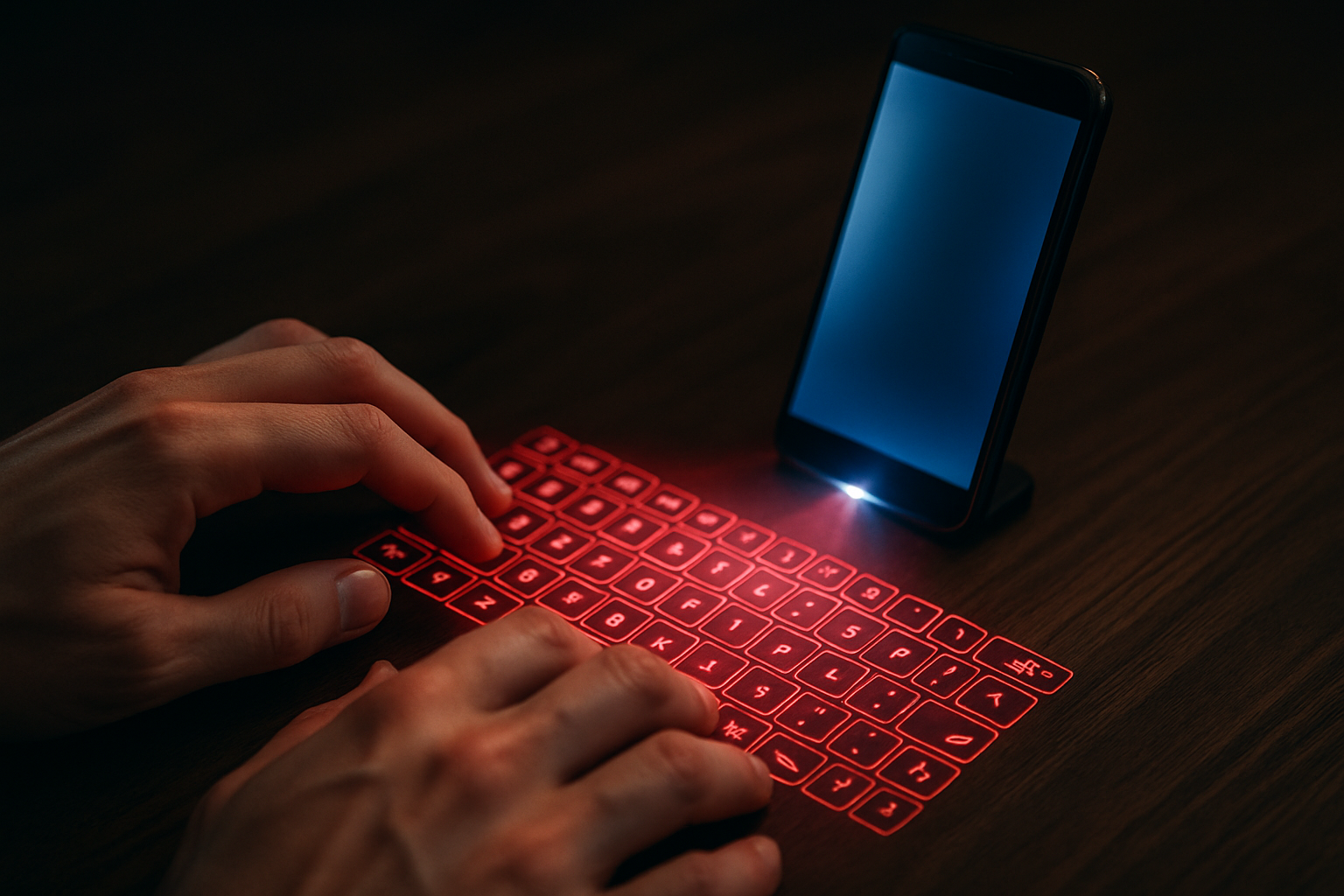Holographic Keyboards: Typing in Thin Air
In an era where our devices are becoming thinner, lighter, and more portable, the keyboard has remained a stubbornly physical presence. But what if you could type on any surface, or even in mid-air? Enter holographic keyboards, a technology that's been dancing on the edge of science fiction for years but is now inching closer to reality. These futuristic input devices project a virtual keyboard onto any flat surface, allowing users to type without the need for physical keys. As we delve into this cutting-edge technology, we'll explore its potential to revolutionize how we interact with our devices and the challenges it faces on the road to widespread adoption.

This technology isn’t entirely new – prototypes have been around since the early 2000s. However, recent advancements in laser projection, motion sensing, and artificial intelligence have breathed new life into the concept, making holographic keyboards more responsive and accurate than ever before.
The Promise of Portability
One of the most compelling arguments for holographic keyboards is their unparalleled portability. Traditional keyboards, even foldable ones, still take up significant space in a bag or pocket. A holographic keyboard, on the other hand, could be integrated into a smartphone or a small, standalone device no larger than a deck of cards.
This level of portability could be a game-changer for mobile professionals, travelers, and anyone who values a clutter-free workspace. Imagine being able to turn any coffee shop table or airport seat into a fully functional workstation with just a small projector and your smartphone.
Adaptability and Customization
Another exciting aspect of holographic keyboards is their potential for customization. Unlike physical keyboards, which are limited by their physical layout, holographic keyboards can be instantly reconfigured to suit different languages, typing styles, or even specific applications.
For example, a video editor could project a specialized keyboard layout with shortcuts for their editing software, while a gamer could switch to a custom layout optimized for their favorite game. This level of flexibility could significantly enhance productivity and user experience across a wide range of applications.
Challenges and Limitations
Despite their futuristic appeal, holographic keyboards face several significant challenges. The lack of tactile feedback is a major hurdle – touch typists rely heavily on the feel of physical keys to maintain speed and accuracy. While some prototypes have experimented with haptic feedback systems, recreating the sensation of typing on a physical keyboard remains a significant technical challenge.
Environmental factors also pose problems. Bright lighting can interfere with the projection, making the keyboard difficult to see. Uneven surfaces can distort the projected image and affect the accuracy of the motion tracking. These limitations could restrict the use of holographic keyboards in certain settings.
The Road to Mainstream Adoption
For holographic keyboards to move beyond novelty status and into mainstream use, several key improvements are needed. Enhanced motion tracking and predictive algorithms could improve typing accuracy, while advances in haptic technology might provide a more satisfying tactile experience.
Battery life is another crucial factor. Current prototypes often struggle to last through a full day of heavy use, a significant drawback for a device meant to enhance portability and convenience.
The Future of Input
As holographic keyboard technology continues to evolve, we may see it integrated into a wider range of devices. Smartwatches could project keyboards onto users’ arms, while augmented reality glasses could display virtual keyboards in mid-air, visible only to the wearer.
The potential applications extend beyond simple text input. Holographic technology could be used to create virtual musical instruments, control panels for smart home devices, or even interactive gaming interfaces projected onto any surface.
While holographic keyboards may not entirely replace their physical counterparts anytime soon, they represent an exciting step forward in how we interact with our devices. As the technology matures, we may find ourselves typing on tables, walls, or thin air, seamlessly blending the digital and physical worlds in ways we’ve only imagined in science fiction.





